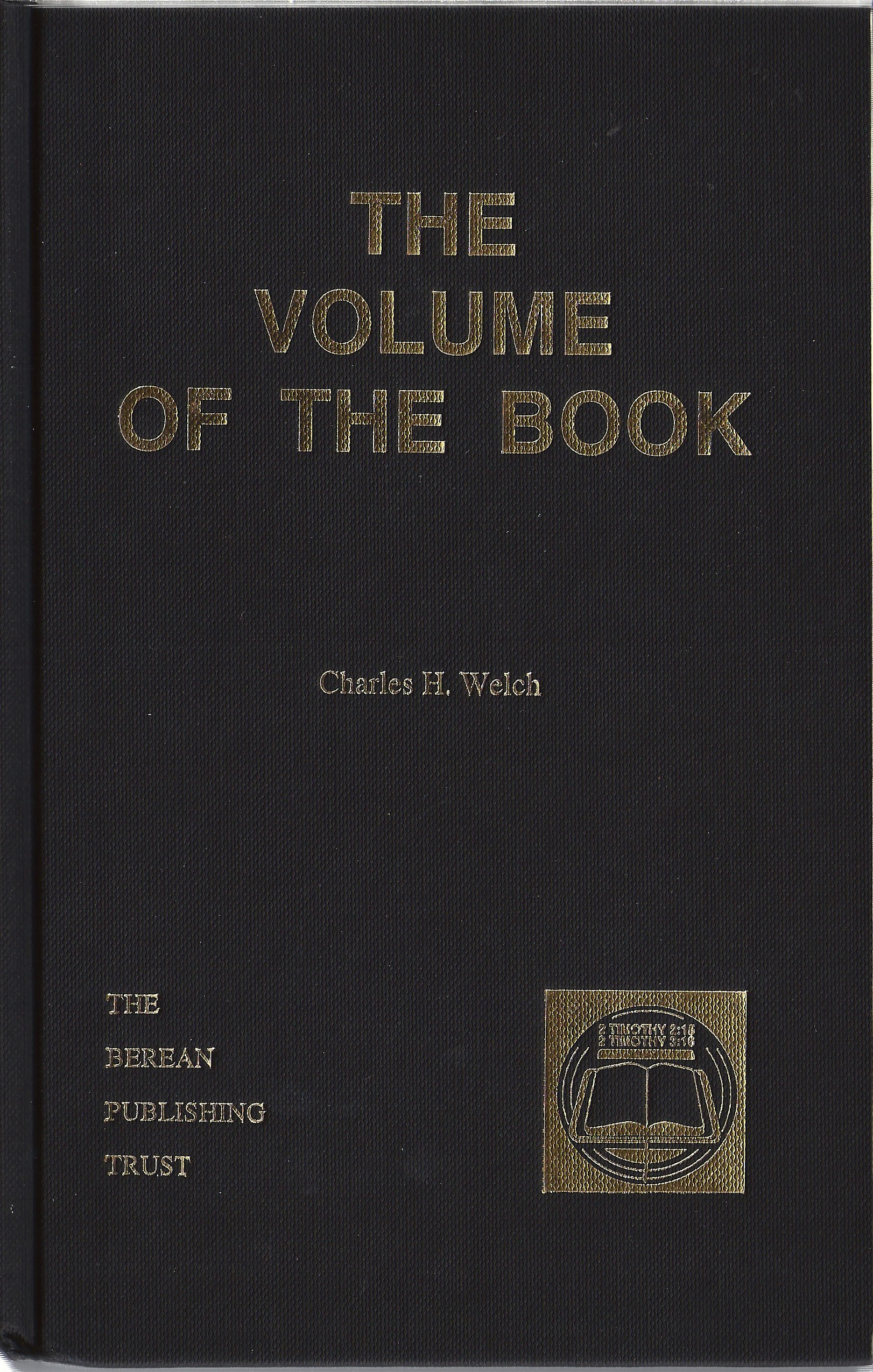Currently we accept orders for domestic delivery only.
If you are located outside the United States and wish to make a purchase, please contact us or mail us at:
Truth For Today, Inc., PO Box 607, West Union, SC 29696
or call Ph. # 864-638-8780
Volume of the Book
Volume of the Book
By Charles H. Welch
Book Review by Robert Guenther
The word ‘volume’ means a collection of written or printed sheets bound together and constituting a book. Various articles from early issues of the Berean Expositor and several illustrations of the preserved copies of the testaments were used to produce this work. This series of B.E. article deals with the subject of how the original manuscripts have come down to us and explains the value in comparing the various translations.
The first chapter mentions the truth that “All Scripture is given by inspiration of God” (2 Timothy 3:16). It also establishes that “Holy men of God spake as they were moved by the Holy Ghost” (2 Peter 1:21). These were the methods in which we received the original text.
The canon of the Old and New Testaments is the subject of chapter 2. The word ‘canon’ in its primary sense means a ‘reed’ but came to mean ‘rule’. When we speak of the canon of Scripture we mean those sacred books which meet three criteria; genuine, authentic and authoritative. The Hebrew canon consists of 22 books, one book for each letter of the Hebrew alphabet. The English. O.T. separates the 12 minor prophets, the so-called double books and a few others in order to add up to 39. We can be assured that we are not missing any books from our translations.
The Septuagint, which is the Greek translation of the Hebrew Old Testament, is explained in chapter 4. This great work is the most valuable witness that we have because it is quoted by the Lord and His apostles to prove doctrine and practice.
The methods of introducing Old Testament quotations in the New Testament are the subject of chapter 5.
Chapter 6 discusses the undertaking of the making of the Revised Version (R.V.). The goal was not to retranslate but merely to revise the standard Authorized Version (A.V.). Each decision of change required a two-thirds majority to vote. Because of this painstaking process, the revised version took 10 ½ years to complete. There is value in using the Revised Version and the New English Bible, and others that are available now as a cross reference to the Authorized Version. This method of study can help us to arrive at the truth and not be misled by the bias of the translators.
The final chapter introduces us to the Apocrypha books which were written by the Alexandrian Jews in Greek. These were valuable, but not inspired and therefore couldn't be included in the canon.

